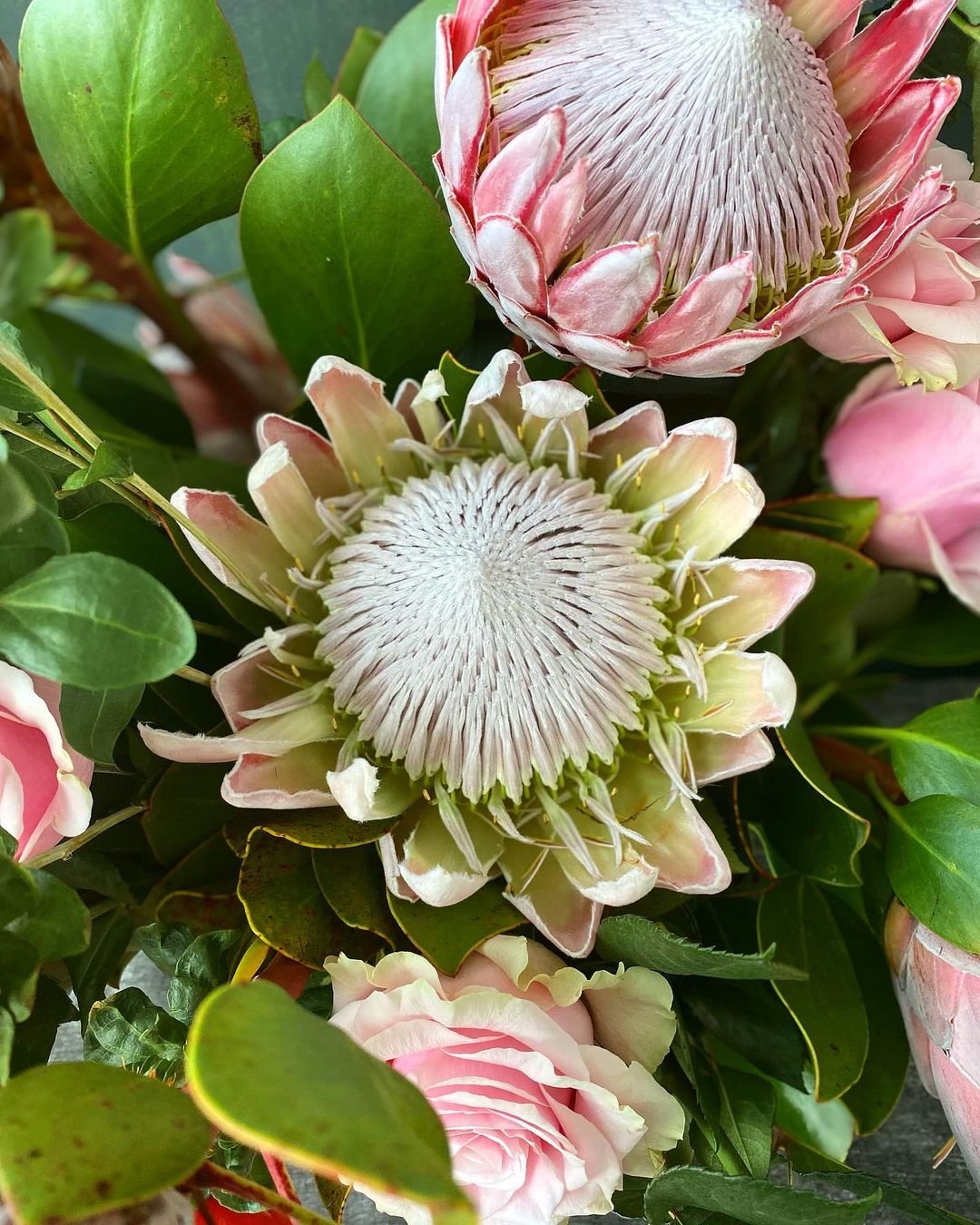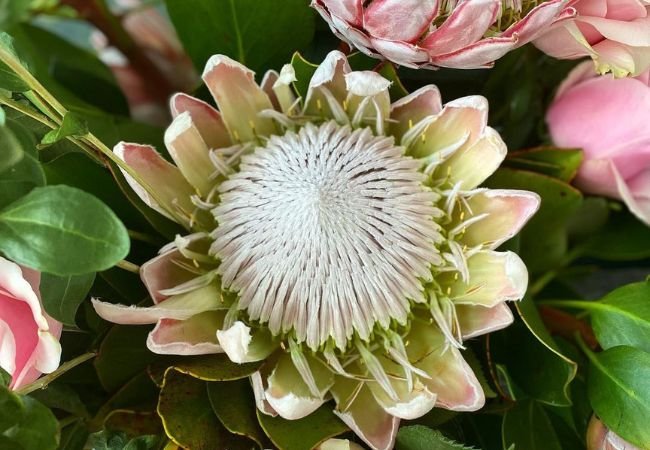Discover the secrets to successfully cultivating proteas, a stunning and unique group of flowering plants. Learn about the optimal growing conditions, planting, care and harvest tips for these captivating blooms.
Proteas are a remarkable group of flowering plants that hail from the southern hemisphere, particularly South Africa and Australia. With their large, sculptural blooms in a range of vibrant colors, proteas make a dramatic addition to any garden or floral arrangement.While proteas may seem exotic and challenging to grow, they are actually quite manageable for home gardeners with the right information. In this comprehensive guide, we’ll walk you through everything you need to know to cultivate these stunning flowers from selecting the perfect variety to providing the ideal care.
Whether you’re an experienced green thumb or just starting to explore the world of horticulture, this guide will give you the knowledge and confidence to successfully grow your own proteas. Let’s get started!
Here’s an easy chart for Proteas:
| Aspect | Information |
|---|---|
| Botanical Name | Protea spp. |
| Common Name | Proteas, Sugarbush |
| Plant Type | Evergreen shrub or small tree |
| Zones | 9-11 |
| Sun Exposure | Full sun |
| Soil Type | Well-draining, slightly acidic to neutral |
| Watering | Low; drought-tolerant once established |
| Bloom Time | Varies by species, often winter to spring |
| Flower Color | Wide range: pink, red, white, yellow, orange |
| Height/Spread | 3-20 feet tall, 3-10 feet wide |
| Special Features | Drought-tolerant, unique flowers, attracts pollinators |
Understanding Proteas

Proteas belong to the Proteaceae family, which contains over 1,700 species of evergreen shrubs and trees. They are known for their bold, architectural flowers that come in a wide array of shapes and hues, including pink, red, yellow, orange and white.
Some of the most popular and widely grown protea varieties include:
- Pincushion Protea (Leucospermum)
- Sugarbush (Protea)
- King Protea (Protea cynaroides)
- Cone Protea (Leucadendron)
These plants are native to the Mediterranean climate regions of the southern hemisphere, particularly South Africa, Australia, and parts of South America. They thrive in hot, dry conditions with cool, wet winters.
Proteas can make excellent cut flowers, with blooms that can last up to 3 weeks once cut. They are also beautiful, low-maintenance additions to gardens and landscapes, providing unique year-round interest.
Site Selection and Soil Preparation
Choosing the right growing site is critical for successfully cultivating proteas. These plants have specific soil and climate requirements that must be met.
Sunlight
Proteas need full sun exposure, at least 6 hours of direct sunlight per day. They will not tolerate any significant shading. Choose a planting location that receives sun from morning until evening.
Soil
Proteas grow best in well-draining, acidic soil with a pH between 4.0-6.0. They do not tolerate heavy, clay-based soils or alkaline conditions.
Amend your garden bed with plenty of organic matter like compost or peat moss to improve drainage and lower the soil pH. You can also mix in some coarse sand or gravel to further enhance drainage.
Avoid using lime or other alkaline soil amendments, as these will make the soil too basic for proteas to thrive.
Climate
As mentioned, proteas are adapted to Mediterranean climates with cool, wet winters and hot, dry summers. In the United States, the ideal climate zones for growing proteas are USDA Hardiness Zones 9-11, found in areas like California, the Pacific Northwest, and the Southeast.
If you live outside of these zones, you can still grow proteas, but you may need to take extra steps to protect them from extreme cold or heat.
Wind Protection
Proteas are sensitive to strong winds, which can damage their tall, fragile stems and flowers. Choose a planting site that is sheltered from prevailing winds, or erect a windbreak using a fence, hedge, or other structures.
With the right growing conditions in place, you’ll be well on your way to cultivating a thriving protea garden.
Planting and Establishing Proteas
Proteas can be grown from seed, but they are often easier to start with nursery-purchased plants or cuttings. Here’s how to get your proteas in the ground:
Timing
The best time to plant proteas is in the fall or early spring, when temperatures are moderate. Avoid planting during the height of summer or the coldest winter months.
Planting Depth
Dig a hole that is only slightly deeper than the root ball of your protea plant. The top of the root ball should sit just below the soil surface. Backfill with the amended soil mixture.
Spacing
Space protea plants 3-5 feet apart, depending on the mature size of the variety. This gives them enough room to spread out their root systems and develop full, bushy growth.
Mulch
Apply a 2-4 inch layer of organic mulch like pine bark or wood chips around the base of the plants. This helps retain moisture and suppress weeds. Keep the mulch several inches away from the plant stems.
Water
Water the newly planted proteas deeply, ensuring the soil is thoroughly saturated. Continue watering regularly for the first year to help the plants become well-established.
With the proper initial care, your proteas should start producing their first flowers within 2-3 years.
Ongoing Protea Care
Once your proteas are planted and growing, there are a few key maintenance tasks to focus on to keep them thriving:
Watering
Proteas have relatively low water needs compared to many other plants. They prefer their soil to dry out somewhat between waterings.
During the growing season, water your proteas deeply once a week, allowing the top few inches of soil to dry out before watering again. Reduce watering frequency in the winter when the plants are dormant.
Be sure to avoid getting water on the foliage, as this can lead to fungal diseases. Always water at the base of the plant.
Fertilizing
Proteas are light feeders and do not require heavy fertilization. Apply a balanced, slow-release fertilizer formulated for acid-loving plants in early spring, following the product instructions.
You can also top dress the soil around the plants with a 1-2 inch layer of compost each year to provide a natural, gentle source of nutrients.
Pruning
Regular pruning helps keep your proteas looking neat and encourages more compact, bushy growth.
The best time to prune is in late winter or early spring, before new growth emerges. Use clean, sharp pruners to remove any dead, damaged, or wayward stems. Avoid pruning in the summer when the plants are actively growing.
Pest and Disease Control
Proteas are generally quite pest and disease resistant, but can occasionally be affected by issues like:
- Fungal diseases (e.g. leaf spot, root rot)
- Aphids
- Scale insects
Monitor your plants closely and address any problems promptly. Avoid overhead watering and provide good air circulation to reduce disease risks. Insecticidal soap or horticultural oil can help control pest infestations.
With the right watering, fertilizing, and pruning routine, your proteas should remain healthy and thriving for years to come.
Harvesting and Using Protea Flowers
One of the best things about growing proteas is being able to enjoy their stunning, long-lasting blooms. Here’s how to harvest and use them:
Cutting Flowers
The ideal time to cut protea flowers is in the morning, when the stems are most hydrated. Use clean, sharp pruners or knives to make a diagonal cut 6-12 inches below the bloom.
Leave at least 3-4 leaves on the stem to allow the plant to recover. Cut flowers should be placed in water immediately.
Conditioning Flowers
For the longest vase life, condition the protea flowers before arranging them. Recut the stems and place them in warm water for 2-4 hours. This helps the flowers absorb water and open up fully.
Vase Life
Properly cared for, protea flowers can last 2-3 weeks in a vase. Keep them in a cool, dry spot out of direct sunlight and change the water every 2-3 days.
You can also mist the flowers or add a floral preservative to the water to help extend their lifespan.
Decorative Uses
Proteas make stunning additions to fresh flower bouquets, centerpieces, and other floral arrangements. Their sculptural shapes and vibrant colors create a real focal point.
Beyond cut flowers, proteas can also be used dried. The blooms retain their shape well when dried and make lovely, long-lasting decorations.
With their unique beauty and impressive vase life, protea flowers are a wonderful way to add a touch of the exotic to your home.
Protecting Proteas in Winter
For gardeners in cooler climates, providing winter protection for your proteas is crucial. These plants are not tolerant of freezing temperatures or heavy frost.
Mulching
Apply a 4-6 inch layer of organic mulch around the base of the plants before the first frost. This helps insulate the roots and prevent them from freezing.
Wrapping
You can also wrap the plants themselves in burlap, cloth, or horticultural fleece to shield the foliage from cold damage. Be sure to remove the wrapping in early spring once the threat of frost has passed.
Container Growing
For the easiest winter protection, consider growing your proteas in large containers. This allows you to simply move the pots indoors or into a greenhouse when cold weather arrives.
Relocation
If you have the space, you can dig up and transplant your protea plants into a sheltered spot for the winter, such as a cold frame or unheated greenhouse. This removes them from the harsh outdoor conditions.
With a little extra care, you can successfully overwinter your proteas and enjoy them for many seasons to come.
Troubleshooting Common Issues
While proteas are generally quite hardy plants, they can sometimes encounter a few common problems. Here’s how to identify and address them:
Yellowing or Drooping Leaves
This is typically a sign of overwatering or poor drainage. Make sure the soil is drying out properly between waterings and amend heavy soils to improve aeration.
Wilting or Shriveling
Wilting leaves are often an indicator of underwatering. Increase the frequency and depth of your watering schedule.
Brown or Crispy Leaf Edges
Dry, brown leaf edges usually mean your proteas need more humidity. Mist the foliage regularly or use a pebble tray to increase moisture levels around the plant.
Fungal Diseases
Issues like leaf spot or root rot can arise from too much moisture or poor air circulation. Improve drainage, avoid overhead watering and ensure good air flow around the plants.
Pest Infestations
Aphids, scale, and other insects can sometimes attack proteas. Treat with insecticidal soap or neem oil to get the problem under control.
Address any issues promptly and your proteas should bounce back quickly. With the right growing conditions and care, these stunning plants will thrive for years.
Growing proteas may take a bit more effort than some other plants, but the end result is well worth it. With their bold, architectural flowers, proteas make a unique and eye-catching addition to any garden or floral arrangement.
By following the tips in this guide, you’ll be on your way to cultivating a beautiful, bountiful crop of proteas that you can enjoy for seasons to come. Happy gardening!








Leave a Reply